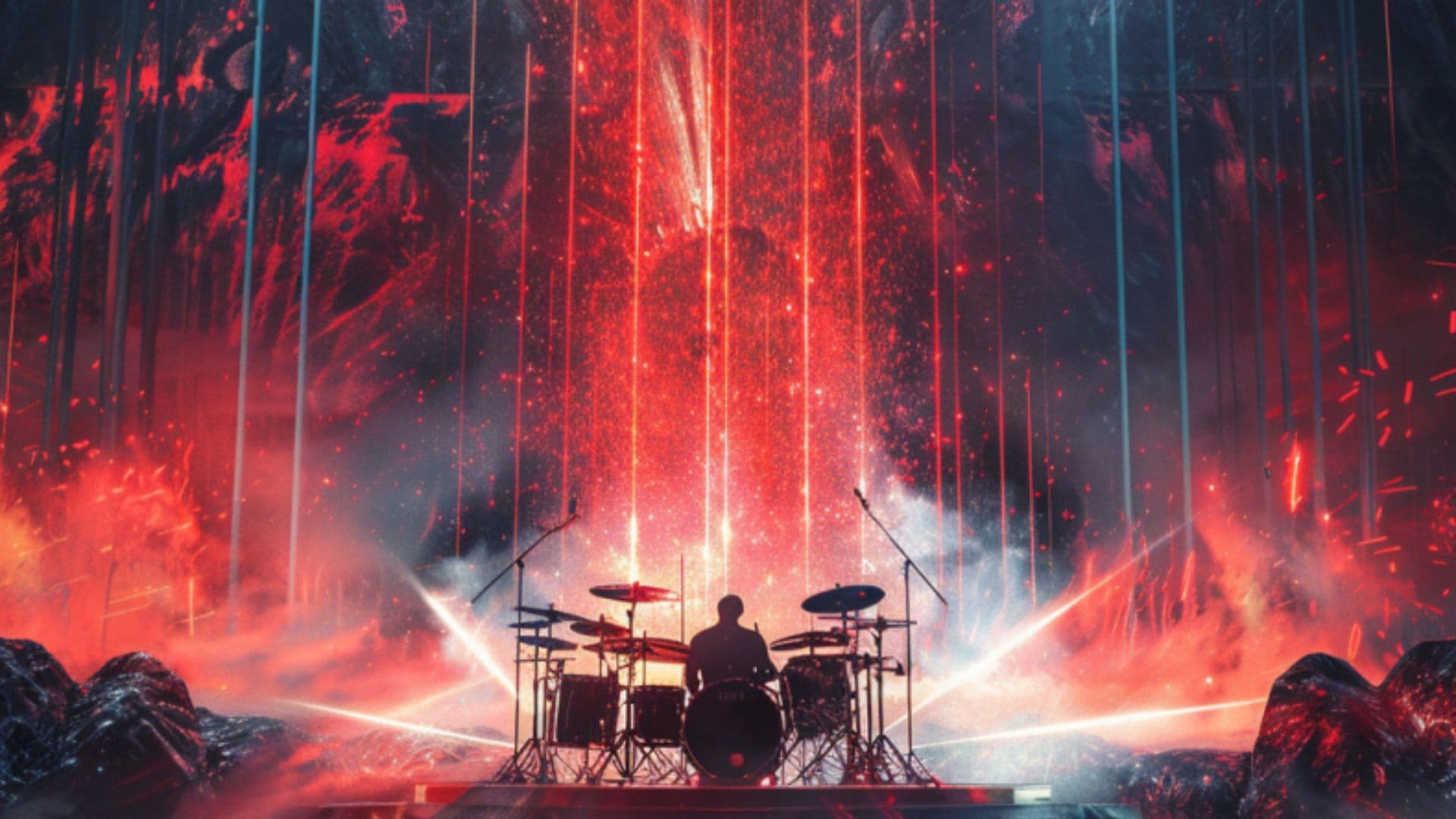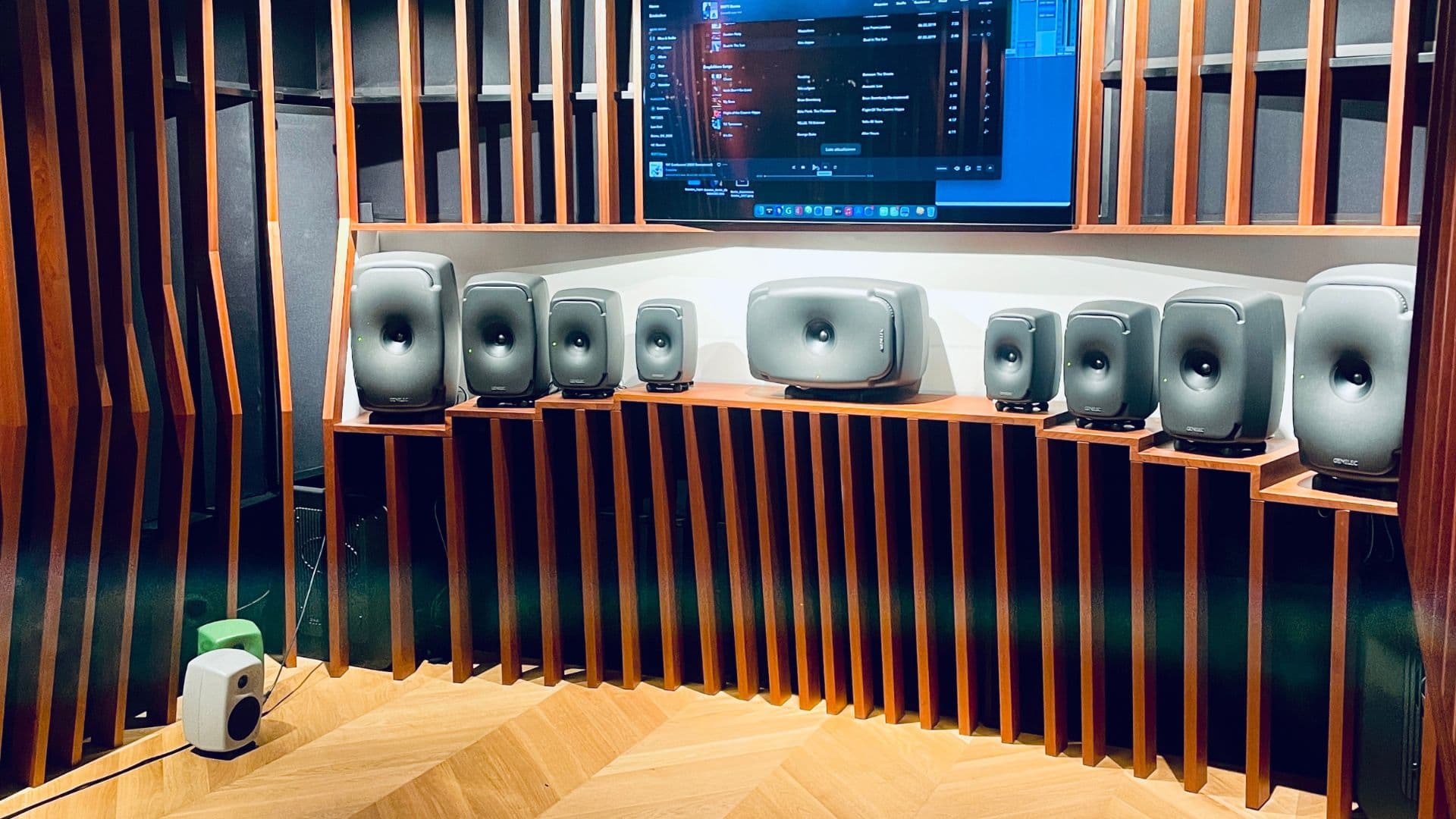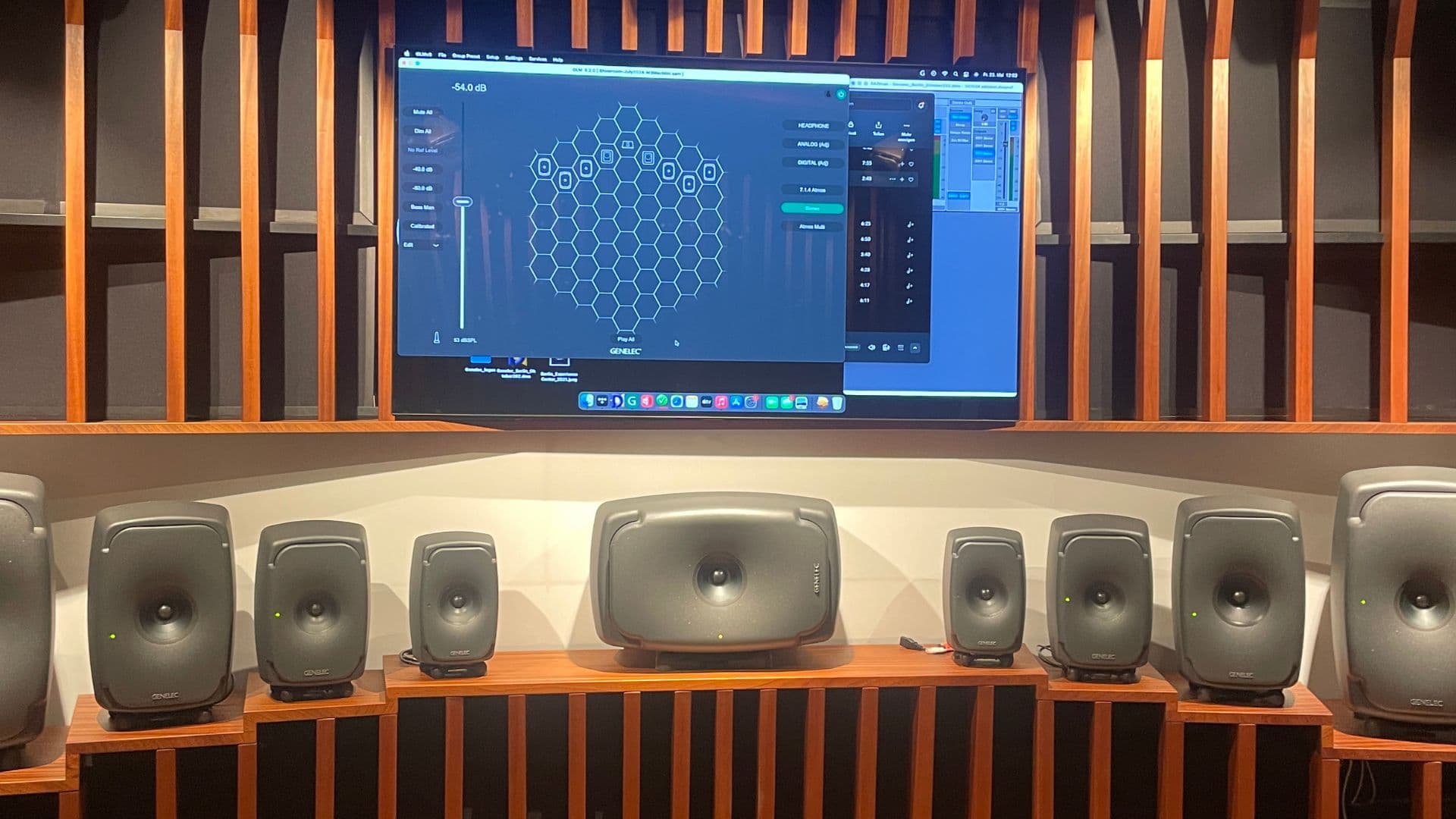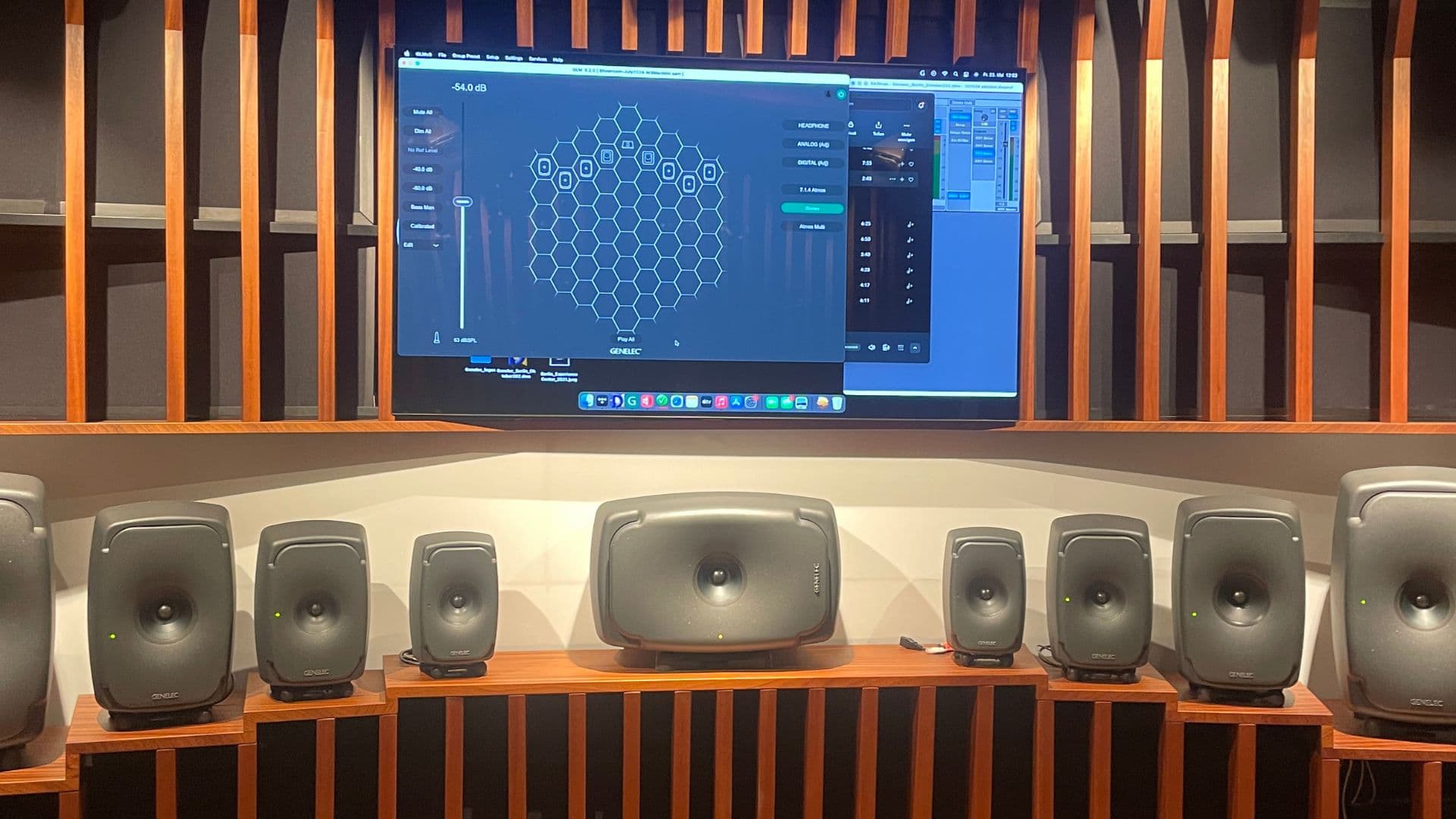
Dolby Atmos Tracks – Why It Can Work for Metal in 3D Audio
Content
It’s widely known that metal fans like to dissect albums with surgical precision. But without comfortable listening conditions, there’s no real dissection. The ultimate rite is catching that hidden detail, missed by less trained ears on the way to a little ego trip. Simon Hench, an accomplished London publisher who tries to discover Wagner’s new opera, says that all the conditions have to be right.
Otherwise you risk waking the irritable, because passionate, listener the moment the experience is damaged or chopped up by outside distractions. In a live analysis of the play during the Digital Methods Winter School, Professor Richard Rogers preached that “distraction leads to inattention—to insensitivity.” A useful opening remark that applies to many creative or reflective activities. When you play an album mixed in Dolby Atmos Tracks, that demand for calm and focus makes perfect sense. The technology heightens sensation.

Metal at a gold-plated price
In France, Dolby has equipped around a dozen Pathé cinemas with its proprietary Atmos technology, in service since 2012. The company promises a sensory experience, claiming to “reinvent creation”. The format has also spread to the music industry through dedicated surround mixing and mastering.
According to the Dolby Professional directory, fewer than a thousand studios worldwide meet the company’s hardware and technical recommendations to offer the service, 46 of them in France. Given the investment needed to build a Dolby Atmos mixing room, few sound engineers specialize in it.
Even though pricing is drifting toward “standard” rates, this high-end positioning still drives up the cost of Atmos-mixed tracks. Then you need to adjust it again, based on the source material and the number of mono stems to be processed. These hurdles, along with the maze of distribution options, keep the technology in an elite, Dream Theater-compatible sphere. It’s a jewel that few up-and-coming artists can afford. Most have to make do with home studios.
Otherwise, they accept artistic trade-offs: seeking a co-production and/or spending months rather than days on recording and mixing, even if that delays release.
If the label deadline [ed.: Season Of Mist] hadn’t existed, Tom [Geldschläger] would still be mixing the album,” jokes Changeling singer Florian Magnus Maier “Morean,” speaking to Horns Up.
Plenty of albums suffer from budget constraints or a lack of expertise that shows in the mix. One day I listened to Bring Me The Horizon in a Dolby Atmos demo car. The vocal level was suddenly much louder than in stereo, the punch was gone, and although there was some action at the front of the vehicle, the mix felt disjointed. Cars are a particularly hostile playback environment for Atmos: the odd speaker placement and uncontrolled reflections make consistent results nearly impossible.
These shortcomings also affect high-profile releases, like Metallica’s 72 Seasons, screened in theaters the night before it dropped. It was an unprecedented eventization of Dolby Atmos, launched live with a circular 360° stage setup. Far from a technical feat, the album felt like a first attempt at the format by someone used to stereo.
For other—artistic or moral—reasons, alternative and extreme strains of metal have traditionally been the least represented among Atmos adopters. The pursuit of a perfect, crystal-clear sound slips away from these DIY-minded movements, which historically embody countercultures.
That said, some cult albums get anniversary reissues with Atmos remasters. A case in point: Death Cult Armageddon by Norway’s Dimmu Borgir, recorded with the Prague Philharmonic Orchestra in 2003. Overall, though, this leans more toward music marketing than a deliberate desire to reinvent a work of art. The problem is backward thinking: starting with the occasion (celebrating twenty years of an album), then picking the tool—without questioning whether the technology is appropriate or how it will actually be used. So the issue isn’t innovation itself, but how metal artists are adopting it.
Immersion—with conditions
If you get past the “gadgetization” of Dolby Atmos, some artists use it smartly and beyond the studio. For the Fear Inoculum promo tour, Tool tech Liam Halpin developed a new live sound “inspired by the Dolby Atmos system installed at his home,” writes Steve Harvey in Mix Magazine. That included layering traditional speakers with d&b audiotechnik’s V-Series and carefully planning their stage position and tilt. The feeling of immersion is omnipresent in Atmos music literature, even for recordings—“the impression of attending a concert,” as one studio claims on its website.
From the listener’s perspective, the price of this concert remains off-putting, since only certain platforms (Apple Music, Tidal, Amazon, Qobuz—and soon Netflix) offer music streaming compatible with the technology. Plus audio Blu-rays that can also play Atmos content.
I hope the recent criticisms aimed at Spotify [ed.: its AI policy, the founder’s investments in the military and fast medicine, as well as age verification via facial recognition] open the door for other online services to support Dolby Atmos, comments Shawn Dealey, chief engineer and producer at Sweetwater Studios in Fort Wayne, Indiana, for Horns Up.
Beyond subscription costs, Atmos also nudges people to buy hardware to get the full experience like speakers or headphones.

A cultural split
Given these barriers, the format attracts a highly educated, urban audience that cares about production quality and is alert to musical innovation. It’s a critical, arguably material-minded crowd of fans and professionals for whom music is anything but passive.
Naturally, that audience draws interest from a segment of the metal scene with a more ostentatious approach to art. That explains the use of Dolby Atmos across progressive and technical metal, and in certain modern alternative recordings like Deftones or Code Orange, where an “open,” less-compressed sound truly benefits. It’s also notable that artists using Atmos are often those criticized for the cult around them, underscored by expensive, varied, even extra-musical merch.
Still, Dolby Atmos hits stubborn resistance in metal, stopping projects from happening.
There’s a preconceived idea that ‘heavy’ music in general has to be loud to be good; many of the great records released recently have extremely hot stereo masters. Dolby Atmos playback specs are about nine decibels lower than a normal stereo master. So the question ‘Why is this so quiet?’ comes up quite a lot when sending Atmos masters to artists for approval, says Shawn Dealey for Horns Up.
He adds that between 80 and 100 of his Atmos test mixes have never been released. Far from dwelling on fatigue from long hours—or the frequent ghosting by artists, he stays philosophical: “The opportunities I’m given are always enriching […]. The decision not to release the Atmos version often comes down to a lack of budget, lack of interest in the format, or simply poor communication.”
After lengthy negotiations, Shawn managed to convince Animals As Leaders’ management to switch to Dolby Atmos in 2022. Parrhesia is a work that carries weight with engineers. It already shows strong immersive potential; it could push spatial experimentation further, but the result is solid and worth hearing.
A successful exercise, all the more so as it was Shawn Dealey’s first Atmos mix after months studying the format. In several respects, the working conditions were unusual: while 95% of his engineering work happens remotely via MP4 reference approvals, “this was the only time I had a band in the studio for the entire Atmos mix.”
On top of that, Javier Reyes and Nick Morzov, who handled the stereo version, supervised Shawn for a week during this alternate mix. “Nick’s presence and his Pro Tools rig were a big help to get specific stems, as we tried different mixing methods,” he adds. This “Metal in Dolby” reference album should be viewed with some caution because its composition and distinctive style don’t represent the broader scene very well.
It comprises nine highly atmospheric instrumentals, some bordering on contextual music (“Asahi” or “The Problem of Other Minds”). The engineer half-admits it: “As soon as you introduce vocals and heavy, consistent guitars across a production, you lose the ability to create such a unique Dolby Atmos experience.”
More recently, however, a production from the Obscura-verse challenged that view: Changeling, the progressive death project led by Berlin virtuoso Tom Geldschläger. The self-titled album succeeds by multiplying sound sources—black-metal vocals, oud, Wagner tuba, or synth pads—“to make spatial moves convincing.”
Eric Horstmann (Immersive Lab) asked Tom “Fountainhead” to record an additional set of four guitar tracks to occupy the space. As Eric pointed out, ‘the wall of sound is old school. We wanted to create a room of sound,’” reports the engineer. Despite its instrumental density, the music breathes; the group even allows itself a neo-classical interlude without falling into all-symphonic excess.
“I know the ultra-distorted elements used in extreme metal are very close to white noise—growls, cymbals, blast beats, or high-gain rhythm guitars. Blending them with subtler instruments and layers is a real challenge. That’s why any orchestral metal production requires top-tier arranging, performance, and engineering if you truly want to hear the violins above the band’s ‘grind,’” analyzes singer and lyricist Florian Magnus Maier “Morean” (Alkaloid, ex-Dark Fortress) for Horns Up.
It’s an ambitious work punctuated by musical climaxes such as “Abdication” and the final minutes of “Anathema,” which at times recall Devin Townsend through gently apocalyptic passages and organic “white solos,” brilliantly composed. “As the songs became more and more complex and opulent over the writing process, Tom started imagining the Dolby Atmos spatial mix of all those layers, because it allowed every element to come through despite the high sonic density,” Morean continues.

Interview with Tom Geldschläger (Changeling)
Which album introduced you to Dolby Atmos?
At the start of writing Changeling, I was invited to join a friend at an IMAX listening event for Rammstein’s Zeit. I mainly went for the event, but discovering the creative and sonic potential of the format in such a large room was a revelation.
I’ve always struggled to translate my music properly in stereo, since I often combine metal with orchestral elements, sound design, electronics, and rather exotic timbres and instruments. And what would become Changeling was already shaping up to be my most ambitious project yet. That night, I left with the deep certainty that I absolutely had to write and produce this music in spatial audio.
How did the label react to your choice to prioritize a Dolby Atmos mix over a traditional one that would likely have been less costly and time-consuming?
They didn’t really get a say, because the album was already finished when I signed with Season Of Mist. I simply presented it to them as the first extreme metal album ever written for this format, right as I joined their roster. But I should add that, although the album was specifically written to fully exploit the format, I only had access to a proper Atmos mixing setup once the stereo mix was completed and delivered to the label.
In short, how this music worked and sounded in Atmos existed only in my head until Eric Horstmann came in, whose experience and equipment finally made that dream possible. We ended up mixing the Atmos version in his Immersive Lab studio in Berlin, abandoning my stereo work entirely and almost starting from scratch, making sure my original artistic vision was perfectly respected before the album’s official release.
Do you think choosing Dolby Atmos influenced how Morean’s vocals were recorded?
You have to know that Changeling isn’t a band, but my third solo album after Fear Is the Enemy and Reverse Engineering, even if each track features an incredible lineup of musicians. Only when Season Of Mist signed the album was a dedicated band name suggested for marketing reasons—which suited me just fine, because I’d love to keep going down this road with this team.
As far as I know, none of the credited artists had previously listened to music in Dolby Atmos. So, I had to describe my intentions and ideas very precisely. Luckily, Morean is a true genius of human imagination, and I have two decades of experience producing artists. We made sure everything worked as planned, addressing a multitude of details and conceptual considerations.
For example, there’s a section of ritual chants at the center of the title track that we couldn’t record together for various reasons. So Morean had to record it alone at home and he nailed it, translating our ideas into a performance probably better than anyone else could have delivered. That’s why he’s not only a dear friend and a fantastic creative partner, but also a constant source of inspiration to me.
“Anathema” is, to me, one of the most immersive tracks on the album… What’s the through-line of the piece?
Those are very interesting terms to describe it! I appreciate all those references! “Anathema” has a long history. Its working title was “Weltseele 2,” because it’s the musical sequel to one of my earlier compositions, “Weltseele,” from Obscura’s Akróasis (2015), which I was part of.
That fifteen-minute piece became one of my best-known works, even if most fans probably didn’t know who wrote it or who played all the guitar parts. My time in that band was unfortunately very bitter and negative, which kept me from writing in that style for a long time. When I finally decided to pick up where I left off with Akróasis, I also made the conscious choice to write a sequel to “Weltseele” that had to be “bigger, better, and complete,” if you see what I mean.
There’s a lot going on in this piece; I make sure I can deliver an unforgettable experience. And I do everything I can to make it fun, inspiring, and thrilling, offering a narrative arc, structure, climax, and satisfying conclusion—just like my favorite musicians would have done. It’s the sound of a metal child raised on Genesis, Mike Oldfield, and Devin Townsend, but also passionate about Stravinsky, Schubert, and Mahler, embracing the idea of being an “authentic” composer and striving to create the music he’d like to hear.
For better or worse, I wanted listeners to feel the same wonder and deep emotional satisfaction that I feel with an epic film, a great book, or an inspiring painting. I wanted this piece to be more than just a song: a work of art that demands your attention and rewards you by expanding your awareness and taking you on an emotional journey—if you’re willing, of course.
You held two advance listening sessions for Changeling on May 21 and 23, 2025, at the Genelec Showroom in Berlin. How did fans respond?
The reactions were absolutely fantastic. I was so afraid people wouldn’t be attentive enough, given a sixty-minute album that’s so complex and conceptual. Not to mention sitting in a dimly lit room to listen to music without any visuals. That seems totally anachronistic in 2025. But to my great surprise, no one looked at their phone even once. Not only did every listener fully invest in the experience, some even came back to ask for certain songs or moments to be replayed while I was doing Q&As outside. I heard many guests say they had a life-shaking experience during those sessions, and I can’t even describe the relief, the gratitude, and the pride I felt. Those sessions marked the end of an incredible act of determination and patience for me.
In metal, more conceptual, progressive (djent) approaches to composition and performance can justify using Dolby Atmos spatialization, as the artists and professionals above explain. For honesty’s sake, though, we should admit that certain genres like classical music are naturally ethereal and treat silence as music. Those traits make Atmos translations easier. By contrast, metal is often synonymous with raw impact. The only scenario where I find it relevant is when the music integrates ‘space’ into the storytelling, a bit like a live concert. But simply repositioning stereo stems in 3D rarely works and unfortunately, that’s often what engineers have to work with. In his view, spatial audio risks diluting metal’s inherent energy.
Question for Florian Magnus Maier “Morean” (Changeling, Alkaloid, ex-Dark Fortress): A few years ago you composed a double-guitar concerto called “Schattenspiel.” It’s well known that classical and symphonic styles suit Dolby Atmos. Has the Atmos experience with Changeling made you want to revisit that piece?
That would be an absolute dream. But for my classical works, a high-quality concert hall remains the best way to enjoy the music fully, because our ears can hear in 3D; a trained ear can pick out a single violin within a large orchestral section. The main problem comes when you have to fold that 3D live setup into a stereo track.
You lose an enormous amount [ed.: of information and quality] on a CD compared with a live performance. Sometimes we try to compensate using contemporary production techniques with complex EQs, multiband compression, or subtly different reverbs per track. I often find the result flat and powerless: the dynamics suffer, the stereo panorama isn’t enough to distinguish winds or strings when everyone’s playing, and in the end everything stacks up in the mix. So yes, Dolby Atmos will also be the solution for those recordings.

FAQ with Martin Rieger
I don’t love saying “I listen to metal.” People jump straight to the extremes, old-school heavy, thrash, or black, and picture nothing but harsh screaming. The reality is a wide spectrum that’s hard to explain to non-metal listeners. I’ve played guitar for over a decade, always loved heavy distortion, and even when I composed for film I’d sneak guitars into epic scores to add a hybrid edge. These days I gravitate toward metalcore and post-hardcore: melody, synth layers, and bands that don’t take themselves too seriously.
Recently I sat down with Eric, who had already mapped the current state of Atmos in metal. Short version: there isn’t much out there, and a lot of it barely uses true 3D placement. Metallica’s Atmos release felt like a first attempt by someone thinking in stereo—it just didn’t sit right. On the plus side, Animals as Leaders – Parrhesia shows solid immersive potential; it could push spatial ideas further, but what’s there is worth hearing.
I’ve worked full-time in spatial audio for nearly a decade—mostly VR and immersive video. I rarely mix Atmos music myself because, if it’s not done with intent, it often adds little value. Many releases suffer from tight budgets or limited expertise, and you can hear it.
Metal is one of the hardest genres to mix well, and most engineers are naturally more experienced in stereo. But if you preserve the punch, Atmos can reveal details you never notice otherwise. Example: stacked screams (growls + high-pitched shouts). In stereo they blur into one “monster.” In Atmos it felt like multiple monsters circling me—instant goosebumps. Eric even played me the raw a cappella layers, and it was intense.
We should separate speaker-based Atmos from headphone playback. I’m primarily a headphone listener, and with good content and storytelling, binaural mixes can work on any decent pair. But Dolby’s current HRTF filtering can make guitars sound harsh and distant, so I often still prefer stereo on headphones. On speakers, though, metal can genuinely shine—sometimes more than its stereo equivalent.
We’re in a transition phase, like early stereo when mixes threw vocals hard left and instruments hard right. It’ll take time, experimentation, and courage for engineers to fully exploit spatial audio for metal and the hardware ecosystem is still catching up.
I like metal “in my face”, and spatial audio can dilute that energy. Still, after hearing Eric’s work, I’m convinced there’s a way to make it work—and we’re only at the beginning of that journey.
If you are interested in working with me, be in metal or other sounds, feel free to give me a shout.
RoaaaaaarRelated Articles
Dolby Atmos Music - What is this 3D sound experience in detail?
Dolby Atmos Music test comparison with 360 Reality Audio Demo
Dolby Atmos Apple Music: Why It Sounds Bad and How 3D Spatial Audio Can Do Better
Dolby Atmos Mix: A Comprehensive Tutorial for Music Producers
Dolby Atmos Mixing - Essential Guide for Musicians and Producers